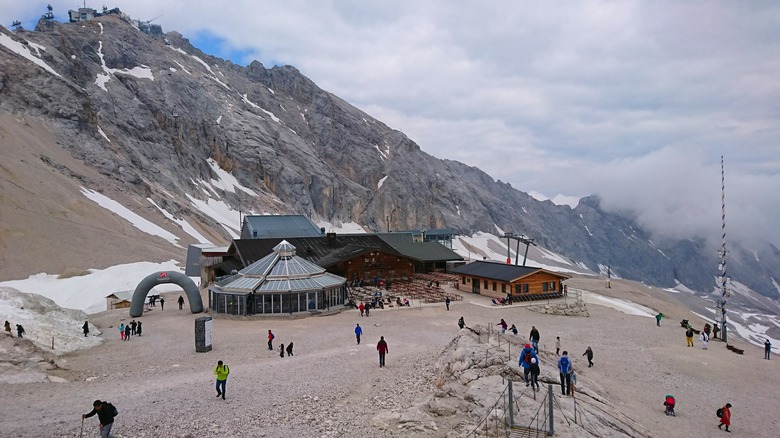The Captivating European Country Rick Steves Recommends For Unforgettable Hiking Adventures
When most travelers think of the alps, their minds jump to expensive ski trips in Switzerland. Yet, one of its neighbors inspires unforgettable hiking adventures recommended by travel expert Rick Steves, who notes on his website that in the alps, ”each region has a distinct flavor." This is particularly evident in the Austrian Alps, where well-marked trails, hearty traditional food, and Hütten — mountain huts offering overnight stays with panoramic views — combine to create a unique alpine experience, all at prices that will leave plenty of room in your wallet for a few glasses of homemade schnapps.
Planning a hike in Austria can feel overwhelming at first, but it's surprisingly accessible. With trails for every hiking level, many options are accessible via Austria's sprawling public transport system of trains and buses. For hikers keen to explore both mountains and city life, Rick Steves offers his very own Austria Itinerary, which recommends flying into Vienna and out of Munich, giving you a chance to explore these historical cities, as well as the impressive mountains in the regions of Upper Austria, Salzburg, and Tyrol. However, there are also airports with international flights from cities including Vienna, Salzburg, and Innsbruck, and train stations at pretty much all major towns and cities if you're traveling through Europe by rail.
Hiking Zugspitze: Rick Steves' top pick for alpine views
Travel pro Rick Steves has plenty of tips for hiking in Europe — and when it comes to summits, he recommends the Zugspitze — Germany's tallest mountain. From the peak, on a clear day, you can take in sweeping views across four countries: Germany, Austria, Switzerland, and Italy. The summit is technically in Germany, and the best place to start a hike up Zugspitze is in the town Garmisch-Partenkirchen. This German town is right along the border with Austria and is accessible with public transport from major Austrian cities, including Salzburg.
From there, experienced hikers can tackle an ambitious climb of over 7,000 feet spread out over roughly 13 miles — about the length of a half marathon. For the best way to take in the scenic beauty, break the journey into two days, with cozy Hütten and welcoming restaurants along the way. Prefer a less strenuous option? Rick Steves suggests taking the cable car from Ehrwald, an Austrian town also accessible via public transport. Once at the 9,700-foot summit of Zugspitze, you'll find shops, restaurants, a museum, panoramic terraces, and Germany's highest beer garden.
Planning the perfect alpine hike in Austria
Before heading for the hills, consider the fitness levels of everyone in your group. Mountain hiking demands a specific kind of endurance — even seasoned gym-goers can find the uphill effort unexpectedly exhausting. Respect the terrain by dressing in layers, wearing proper hiking boots, and bringing poles for steeper routes. Never hike alone if possible; if you're solo, consider joining a local tour or a hiking group on Facebook. Women might enjoy Girl Gone International's Innsbruck or Vienna chapters, while International Hiking Austria is a great Facebook group for all genders.
Once you've picked a region, think about whether you want to opt for a day hike or a multi-day, hut-to-hut trek. Both options are well-supported in Austria, with hundreds of trails and cozy alpine Hütten along the way. Websites like Bergfex and Alpenverein Aktiv can help you find the right route, and GPS apps like Komoot are great for navigation.
If you're near Vienna, Schneeberg is a perfect alpine escape. Just 1.5 hours by train, this 7,000-foot peak is the highest in Lower Austria and ideal for a day or weekend trip. Start in Puchberg am Schneeberg, a mountain town tucked in the Austrian alps, and then head up your chosen trail along the mountain. The full hike from Puchberg am Schneeberg to the summit, Klosterwappen, takes about seven hours, or you can hop on the Salamander Train to skip the lower trails and start closer to the summit (the train will take you 6,000 feet above sea level). Book huts in advance (some require emails or calls), bring cash for meals at the mountain Hütten, and pack warm layers — even in summer, it gets cold at the top. After all, Schneeberg does mean "snow mountain"!


